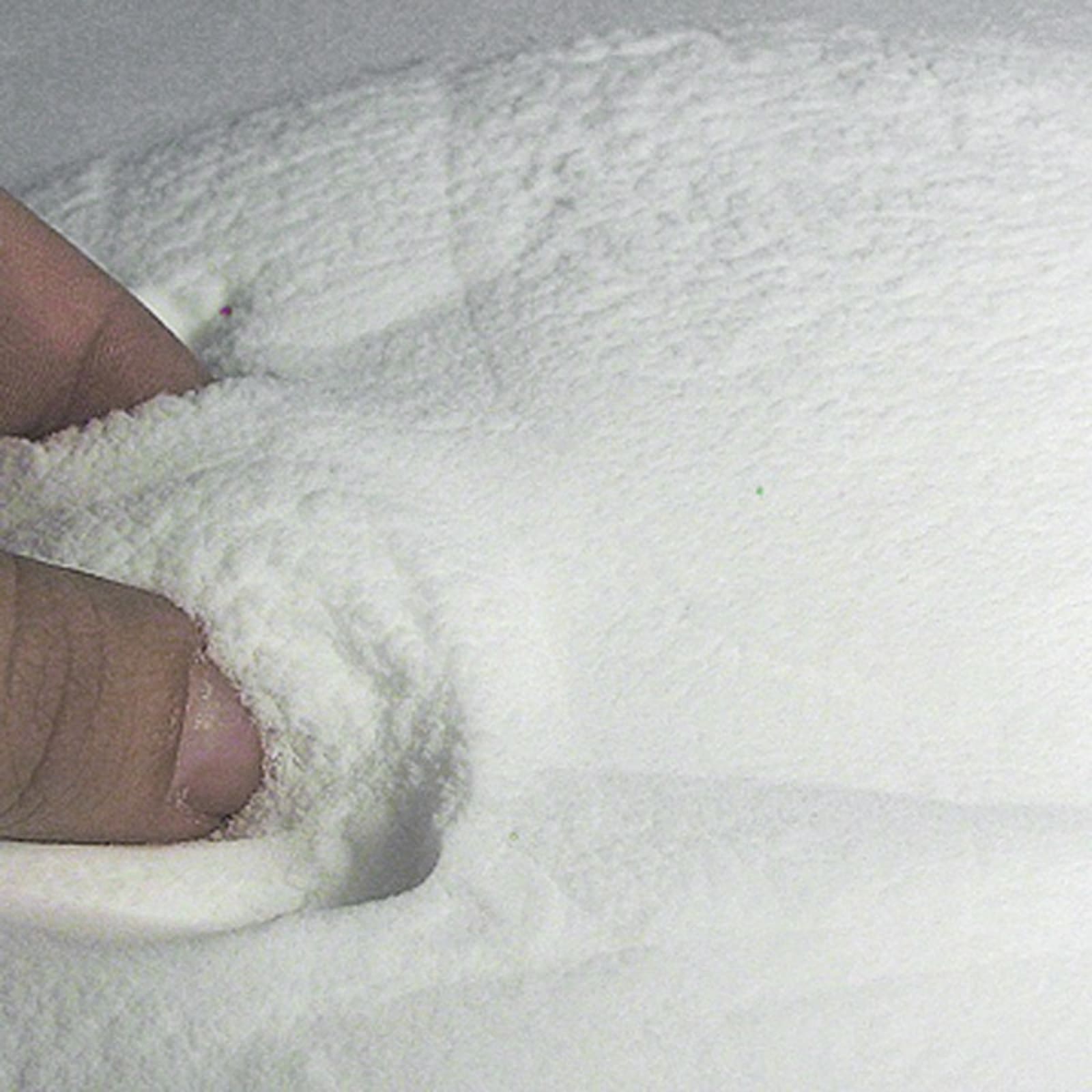3M™ Glass Bubbles 0,12 g/cm³
3M™ Glass Bubbles (hollow micro glass balls) consist of a water-insoluble, chemically stable borosilicate glass of low-alkali content
- Yields lightweight filling compounds
- Economical light filler
- For epoxy, polyester, and vinyl ester resins
3M™ Glass Bubbles are used as light filling material for mixing light filler, adhesive and moulding compound.
3M™ Glass Bubbles make it possible to significantly increase the weight of plastic components
reduce, increase their dimensional stability, abrasion resistance and surface hardness and at the same time reduce thermal expansion. In addition, the low thermal conductivity results in excellent thermal insulation. Due to their perfect spherical shape, their use also increases precision in manufacturing as well as the dimensional stability and heat resistance of components.
The common assumption that "weight reduction = additional costs" does not necessarily apply here: with Micro-Ballons™, the weight of components can be reduced without having to increase manufacturing costs.
Properties:
- Low density
- Spherical
- Pourable
- Inert
Advantages:
- Reduced weight
- Less resin required
- Excellent resistance to water
- Low weight with high compressive strength
- Non-flammable
- Not porous
Technical data:
Nominal density:: 0.12 g/cm³
Colour: White
Average particle size: ca. 65 µm
|
Average Particle Density*
|
Bulk density
|
Isostatic Compressive Strength**
|
Buoyancy rate
|
Nominal density
g/cm³ |
tolerance range
g/cm³ |
tolerance range
(calculated)
g/cm³ |
Test pressure
|
Amount of undestroyed
% glass bubbles |
Typical values in % of volume |
| bar |
MPa |
psi |
min. |
Typisch |
| 0.125 |
0.10-0.14 |
0.05-0.10 |
17 |
1.7 |
250 |
80 |
90 |
96 |
*3M QCM 14.24.1 ** 3M QCM 14.1.5
The volume details are intended to assist in judging the amount supplied. These details refer to the loose bulk amount. The contents may become compressed during transport or storage. For more information see 3M




